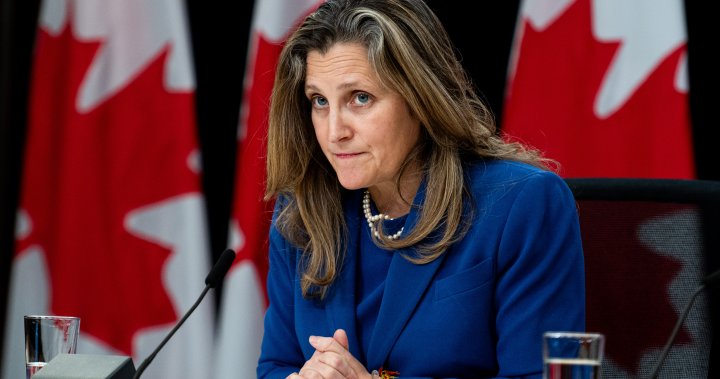As wind-driven wildfires broke out on the Hawaiian island of Maui last summer, killing more than 100 people and destroying thousands of buildings, a telecommunications blackout kept many residents in the dark.
The outage exacerbated an already devastating situation in areas such as the town of Lahaina, home to around 13,000 people, where both evacuation orders and first responders’ emergency communications were hampered.
In addition to the downing of all cellphones and landlines in Lahaina, the area also faced a failure of commercial electrical service for days.
Authorities are still putting together the pieces to understand how so much went wrong throughout the incident. A key lesson from the Maui wildfires has emerged: resilient telecom networks are crucial when disaster strikes.
Companies and regulators in other jurisdictions, including Canada, are taking note amid growing wildfire activity in remote regions.
“We need to understand what the limitations of networks might be and also have plans that would account for the possible loss of our typical sources of information,” said Jenifer Sunrise Winter, a communications professor at University of Hawaii at Manoa.
“Ideally you’ll have multiple options in case something fails.”
Last month, wildfire damage to fibre lines near Fort Nelson, B.C. caused days-long cellular and internet outages in the province’s north, as well as in Yukon and the Northwest Territories.
While telecom provider Northwestel worked to quickly restore service, the interruption reinforced the risks that those in rural and remote parts of Canada face during natural disasters.
It’s an issue that Canada’s telecommunications regulator is keenly aware of. Two consultations touching on that topic — one considering ways to improve telecom services in the Far North and another on how providers should report and notify customers of major service outages — remain in progress.
“The truth is that no network is flawless. Canada has some of the highest quality networks in the world, but it’s an impossible task to predict and prevent every potential failure,” said CRTC vice-chairperson Adam Scott during a speech at a recent industry event in Toronto, hosted by the Ivey Business School.
“At a time when our networks continue to grow in complexity and the threats we face, including from extreme weather or malicious actors, are as volatile and unpredictable as they’ve ever been, the consequences of not being prepared are dire.”

Carriers turning to AI and satellite solutions
Canada’s three largest providers say robust plans are in place to mitigate the effects of wildfires on their infrastructure.
Breaking news from Canada and around the world
sent to your email, as it happens.
Bell Canada, Rogers Communications Inc. and Telus Corp. all tout various common elements of their strategies, such as year-round reviews of network stability, having fuel-powered generators in key areas for electricity backup, and collaborating with provincial emergency management teams.
The companies have also been working on unique initiatives.
Through a partnership between Rogers and BC Wildfire Service, artificial intelligence cameras were installed on two of the carrier’s B.C. towers in April, with plans to set up three more.
The Pano AI cameras are designed to detect smoke up to a 24-kilometre range, allowing fire crews to view live feeds of potential wildfire smoke and, if needed, respond more rapidly.
“Every minute matters,” said Aaron Pawlick, manager of strategic initiatives and innovation for BC Wildfire Service, in an interview.
“The sooner we can detect something … the better because we could use that to dispatch our resources more quickly on the ground.”
Satellite connectivity has also been seen as a potential solution to keep customers connected during emergencies, especially in remote regions.
Telus announced last year it successfully trialled technology that lets smartphones send and receive voice calls and text messages using satellites. The test was in partnership with Montreal-based provider TerreStar Solutions Inc. and non-terrestrial network service provider Skylo.
Rogers has teamed up with SpaceX and Lynk Global to deliver satellite-to-phone connectivity, while New Brunswick-based rural internet provider Xplore Inc. committed to offering satellite internet in remote locations last fall after the launch of the Jupiter 3 satellite into space.
“In an emergency situation, people are seeing (satellite) as a great alternative or redundant connection because you can literally take it with you,” said Rob McMahon, associate professor of media and technology at the University of Alberta.
Fibre still ‘king’: Telus
McMahon noted the limitations of the “untested” satellite technology, including potential capacity issues compared with fibre.
“As more users come online, how will that degrade the service?” he said, adding satellite technology is also still expensive to the average user.
Bell and Telus highlighted their growing fibre networks, which the former said in a recent press release “are more resilient to extreme weather conditions, reducing the frequency and length of weather-related outages.”
“Fibre is king,” said Phil Moore, Telus’ vice-president of emergency response, during a presentation at last month’s Ivey Business School event.
“We’ve had fibre lines where the poles have burnt on the bottom and they’re actually swinging, and the network’s still up. It’s perfectly fine.”
Despite those strides, gaps remain when it comes to the preparation of Canada’s telecom sector for potential wildfire-caused outages, said McMahon.
He pointed to the barriers facing rural and remote regions, which often have limited infrastructure compared with more populated centres — in terms of road access in and out, as well as communications channels.
Remote regions face redundancy gaps
McMahon said one of the greatest risks to emergency connectivity is lack of “path diversity,” such as duplicate infrastructure or distinct technologies that can carry network connections in case one line goes down.
That’s the case for the Western James Bay Telecom Network, a non-profit Indigenous-owned provider of fibre-optic internet for residents living on Ontario’s James Bay coast from Moosonee through Fort Albany, Kashechewan and Attawapiskat.
“They are reliant on a single regional transport network going up and down,” said McMahon.
“If that line gets cut, they’re disconnected.”
Telus’ Moore said the industry standard is generally considered to be two transport routes for keeping networks running in case of an emergency.
“But it’s a big country,” he said.
While Moore said Telus is “slowly building” a third route across Canada, he pointed out Canadian telecommunications companies face challenges that their global counterparts do not. Chief among them is the cost of building networks in Canada, which is considered expensive compared with other large countries due to factors such as size, density and terrain.
Still, as wildfire activity has increased in recent years, Moore said Telus has also boosted its spending on network resiliency. That includes removing vegetation around its cell towers and other critical infrastructure in areas where dry conditions have led to a higher risk of fire spreading.
“When you’re investing in reliability, it’s like buying insurance,” said Moore.
“Telecom is vulnerable, we’re all quite well aware of it. No matter how much you invest in it, it’s still vulnerable to all the different climactic perils that we have.”





